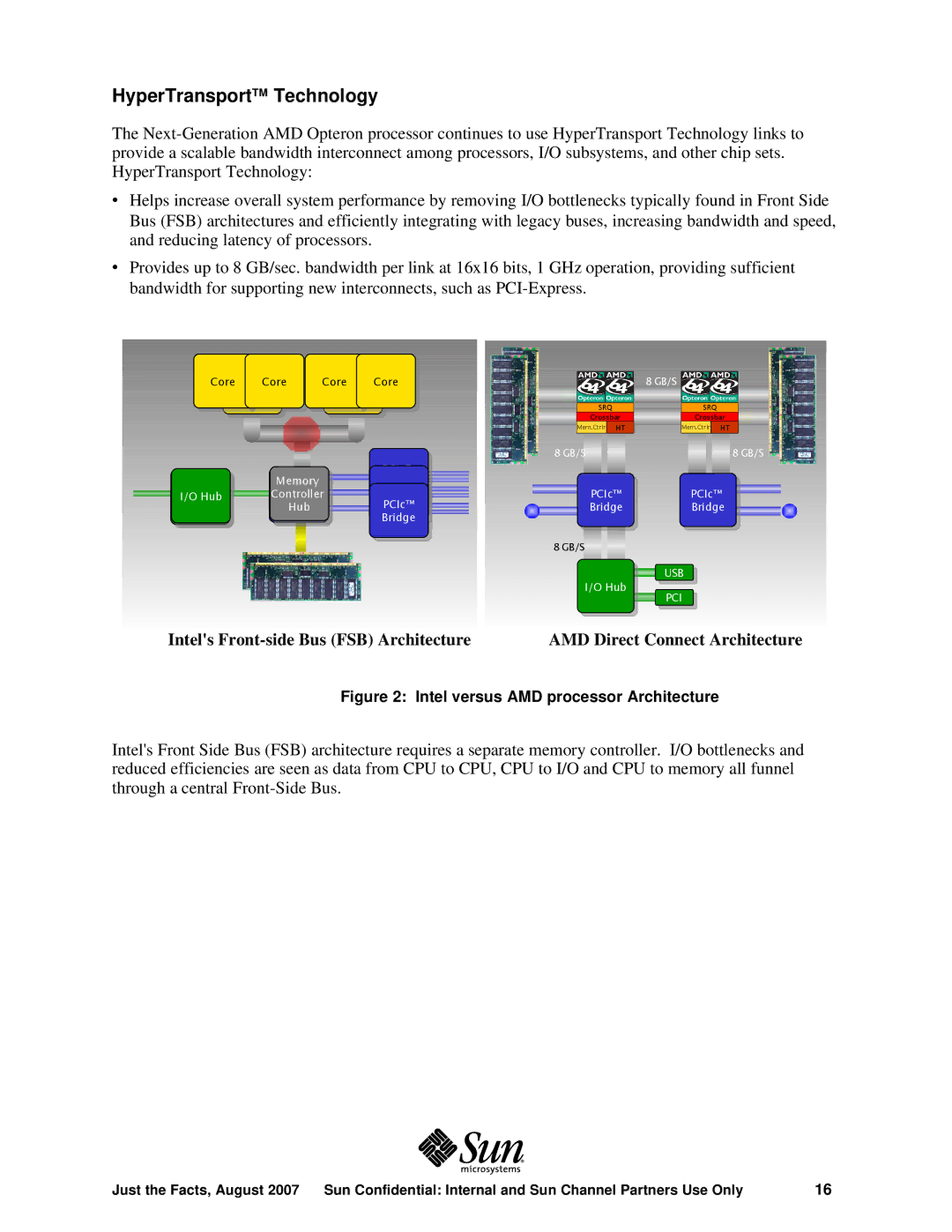
HyperTransportTM Technology
The
•Helps increase overall system performance by removing I/O bottlenecks typically found in Front Side Bus (FSB) architectures and efficiently integrating with legacy buses, increasing bandwidth and speed, and reducing latency of processors.
•Provides up to 8 GB/sec. bandwidth per link at 16x16 bits, 1 GHz operation, providing sufficient bandwidth for supporting new interconnects, such as
Core | Core | Core | Core |
| 8 GB/S | |
|
|
|
| SRQ | SRQ | |
|
|
|
| Crossbar | Crossbar | |
|
|
|
| Mem.Ctrlr HT | Mem.Ctrlr HT | |
|
|
| 8 GB/S | 8 GB/S | ||
| Memory |
|
|
| ||
|
|
|
| |||
I/O Hub | Controller | PCIc™ | PCIc™ | |||
PCIc™ | ||||||
| Hub |
| Bridge | Bridge | ||
|
|
| Bridge |
|
| |
|
|
|
| 8 GB/S |
| |
|
|
|
| I/O Hub | USB | |
|
|
|
| PCI | ||
|
|
|
|
| ||
Intel's | AMD Direct Connect Architecture | |||||
Figure 2: Intel versus AMD processor Architecture
Intel's Front Side Bus (FSB) architecture requires a separate memory controller. I/O bottlenecks and reduced efficiencies are seen as data from CPU to CPU, CPU to I/O and CPU to memory all funnel through a central
Just the Facts, August 2007 Sun Confidential: Internal and Sun Channel Partners Use Only | 16 |
